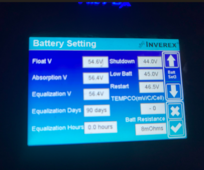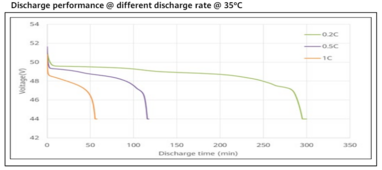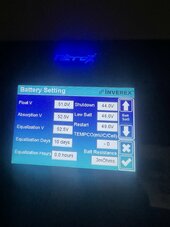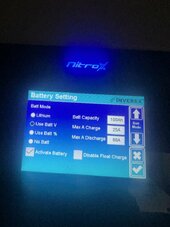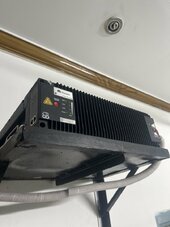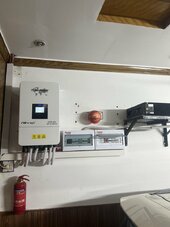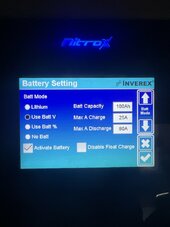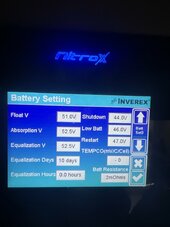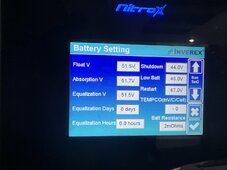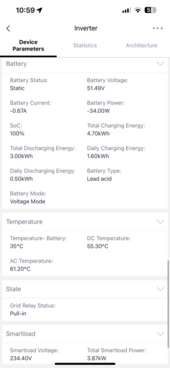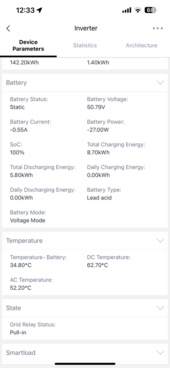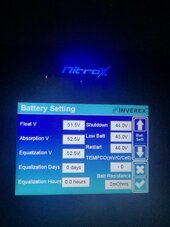xuhaibkhan
New Member
Hello,
I recently got a 8KW Hybrid Solar System installed at my home. The company who installed the system have set the setting, which I am not sure if they are correct.
I am using 580w x 18 Jinko Bifacial Panles, with 8KW Inverex Nitrox Hybrid Inverter and a Lithium Battery ESM-48100B1.
I have 2 ACs running on smart load.
As soon girld is offline, it switches to battery and battery volts right away drop from 54.5V to 50V.
I guess soemthing is wrong with the setting, so I would really appreciate if you guys could guide me.
Are Float V, Absorption V and Equalization Volts are correct for this battery, also they enabled float charge, (I read it should be disbaled for Lithium Battery)
I recently got a 8KW Hybrid Solar System installed at my home. The company who installed the system have set the setting, which I am not sure if they are correct.
I am using 580w x 18 Jinko Bifacial Panles, with 8KW Inverex Nitrox Hybrid Inverter and a Lithium Battery ESM-48100B1.
I have 2 ACs running on smart load.
As soon girld is offline, it switches to battery and battery volts right away drop from 54.5V to 50V.
I guess soemthing is wrong with the setting, so I would really appreciate if you guys could guide me.
Are Float V, Absorption V and Equalization Volts are correct for this battery, also they enabled float charge, (I read it should be disbaled for Lithium Battery)




